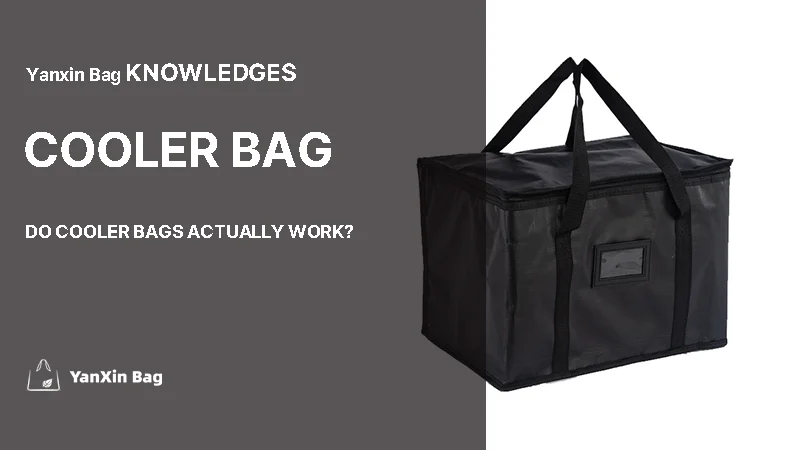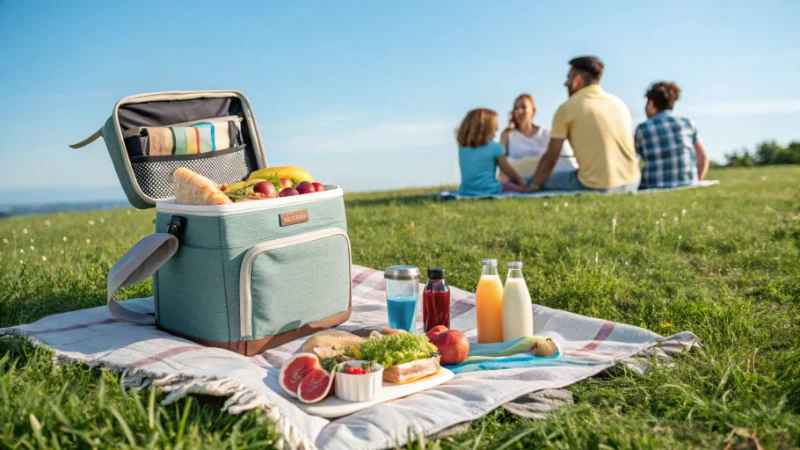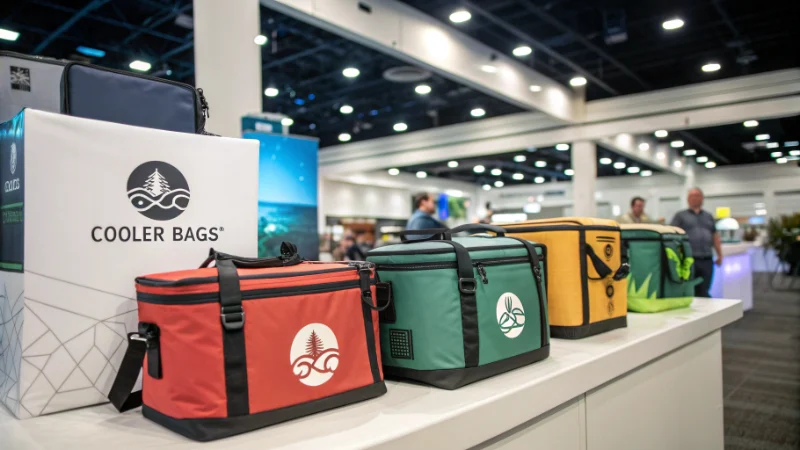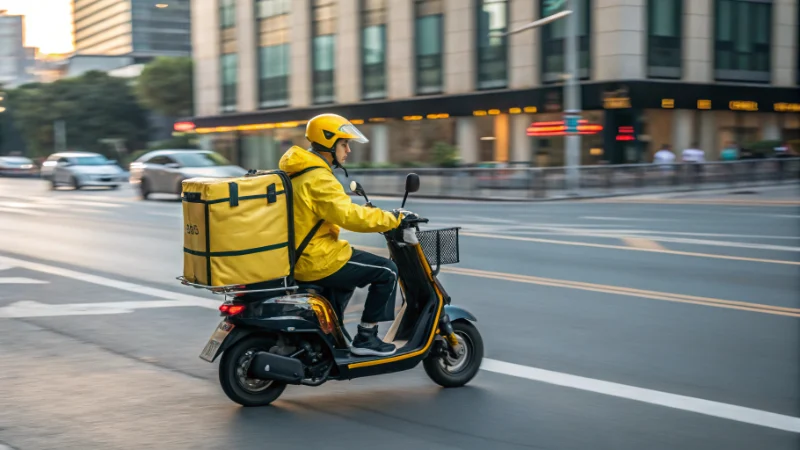
You pack a hot lunch, toss it into a cooler bag, and by the time you’re ready to eat—it’s already gone cold. Or maybe you bring iced drinks to the park, and the ice melts before you even open the bag. Sounds familiar? You start thinking, “Wait… do these cooler bags even work?”
Do cooler bags actually work? Yes, most high-quality cooler bags are effective—if used properly, made with the right materials, and matched to the appropriate use case. They typically keep items cold for 6 to 12 hours, and over 12 hours when paired with ice packs and opened infrequently. For heat retention, they usually maintain warmth for 2 to 3 hours, or up to 4 to 6 hours with preheating or heat packs. Choosing the right type and using it correctly are key to maximizing performance.
While we’ve already answered whether cooler bags actually work, that’s just the beginning. To figure out which type is right for you, it helps to understand how they insulate, how they’re built, and how they perform in different situations. Keep reading — we’ll walk through each of these key points to give you a full picture of how cooler bags really work and how to use them effectively.
Cooler bags don’t generate cold—they work by slowing down heat transfer through a layered structure. At the core of most insulated cooler bags is the middle foam layer, usually made of 1.5–3mm thick EPE or similar materials. This thermal barrier helps block outside heat and traps the cold air inside. Many soft cooler bags also feature textured or patterned aluminum foil lining, which reflects radiant heat and enhances insulation efficiency.
When paired with ice packs, most cooler bags can keep things cold for about 4 to 6 hours. If the structure is well-built and the ice is packed right, some can go up to 8 or even 12 hours.

Soft cooler bags offer greater flexibility in materials and printing options. True
Soft cooler bags can be made from a variety of materials such as nonwoven fabric, cotton, Tyvek, washable kraft paper, and allow diverse printing methods for customized branding.
All cooler bags provide the same level of insulation. False
Insulation performance varies depending on the materials and structure. Hard cooler bags often use thicker foam and sealed lids for longer cooling time compared to soft ones.
Whether a cooler bag “actually works” depends on two things—are you using it to keep things warm or cold, and how are you using it? Here’s what you can expect in different situations:
Keeping lunch warm
Most lunch cooler bags aren’t heated—they just slow down how fast your food loses heat. If you don’t preheat the bag or use a heat source, warm meals usually stay hot for 2–3 hours. If you use an insulated lunch box or preheat the container with hot water, it can last up to 4 hours.
Keeping drinks cold (no ice packs)
If you just toss in cold drinks, fruit, or a chilled lunch without adding ice packs, the cooler bag alone will typically keep things cool for around 2–4 hours. This depends mainly on how well the insulation slows down heat from getting in.
Boosted cooling (with ice packs)
Ice packs make a big difference. For medium to large cooler bags that are packed full and used properly, you can get 6–8 hours of cooling. Some high-performance bags, when loaded with multiple ice packs, can keep things cold for over 12 hours—great for camping, road trips, or long transport.
Here’s a quick look at how cooler bags typically perform in different situations:
| Use Case | Ice Packs Used? | Estimated Duration |
|---|---|---|
| Keeping lunch warm | No | 2–3 hours (up to 4 hours with insulated container) |
| Short trips with cold drinks | No | 2–4 hours |
| Chilled items with ice packs | Yes | 6–8 hours |
| Extra cooling (multiple packs) | Yes | 8–12+ hours |
Keep in mind—these results depend a lot on how you use the bag. A fully packed cooler with minimal opening and a tight seal will always hold temperature better.
Summer heat definitely puts cooler bags to the test—but with the right use, most quality cooler bags still do a solid job keeping drinks cold. In outdoor temps around 30°C (86°F), a soft cooler with ice packs can usually hold its chill for 4–8 hours. Some thicker, heavy-duty models may even stretch that to over 10 hours. Without ice packs though, you’re typically looking at just 2–3 hours.
To make your cooler bag perform better in the heat, here are a few smart tricks:
Bottom line? Even in the middle of summer, a well-packed and properly used cooler bag can still be a dependable way to keep your food and drinks refreshingly cold—whether you’re commuting, picnicking, or just enjoying the outdoors.

Want to get the most out of your insulated cooler bag? It’s not just about tossing in some ice packs. A few smart moves can make a big difference—especially on hot days or during long outdoor trips.
Place ice packs at the top or near the opening. Since warm air tends to sneak in from above, keeping ice up there helps absorb that heat first. Also, try not to leave big empty spaces—fill gaps with towels or cloth to help maintain a steady temperature inside.
Every time you unzip your bag, cold air escapes and warm air rushes in. Plan ahead and take out what you need all at once to keep things cool longer.
Direct sunlight and heat will shorten your cooling time fast. Always stash your bag in the shade or under a cover. If you’re in a car, don’t leave it baking in the trunk—especially not on a hot day.
These simple steps can go a long way. Use them right, and your cooler bag will do a much better job keeping your food and drinks fresh and chilled.
Soft cooler bags can be used for both hot and cold items. True
Soft cooler bags with proper insulation materials like EPE foam or aluminum foil lining can help maintain the temperature of both hot and cold items for short periods.
Soft cooler bags are not durable enough for regular use. False
Soft cooler bags made with thick oxford fabric or laminated materials can be highly durable and suitable for repeated daily use, especially with reinforced stitching and linings.

Thickness matters, but it’s not the only factor. Most insulated cooler bags have a layered structure: a reflective foil inner lining, a middle layer of PE or EPE foam (usually 1–3mm thick), and a fabric outer shell. Thicker foam generally means better insulation, but sealing matters too. A well-designed zipper or Velcro closure can make a big difference in keeping the cold air in.
Price doesn’t override physics. High-end cooler bags might have thicker outer fabrics, better waterproof linings (like PEVA or PVC), or more complex designs—but if you toss in room-temperature food, skip the ice packs, and keep opening the bag, you’ll still lose cooling fast. What truly determines performance is the combination of structure, material, and how you use it. Know the basics, and even a mid-range bag can work wonders.
It’s not about which one is better—it’s about what you need.
When it comes to cooling time, hard coolers have the edge. With thick PU foam insulation and tightly sealed lids, they can keep things cold for 24 to 48 hours or even longer when packed properly with enough ice. That’s great for long outdoor trips or transport.
Soft cooler bags, on the other hand, generally offer 2–4 hours of cooling on their own. If you pack them well and use multiple ice packs, you can stretch that to 6–8 hours. Some high-performance models may even hit 8–12 hours under ideal conditions.
But where cooler bags really shine is portability. They’re lightweight, foldable, and easy to carry—perfect for commuting, lunch runs, short picnics, or daily grocery runs.
In short:
Cooler bags can be made from sustainable or recycled materials. True
Materials like RPET, cotton, and washable kraft paper are commonly used in eco-friendly cooler bags for sustainable branding purposes.
All cooler bags are leakproof by default. False
Not all cooler bags are leakproof. Only those with heat-pressed PEVA or PVC linings and no stitched seams offer high anti-leakage performance.

So, do insulated cooler bags actually work? The answer is yes—as long as you use them correctly and for the right purpose. Whether it’s for commuting with your lunch, carrying chilled drinks on short trips, or keeping groceries fresh after a supermarket run, a well-designed cooler bag can effectively slow down temperature changes and keep your food and drinks fresher for longer.
By understanding how cooler bags work, avoiding common mistakes, and learning how to pack and use them properly, you can truly get the most out of your cooler bag.
When used right, even a lightweight soft cooler bag can be a dependable companion in your daily routine.
If you’re looking for cooler bag solutions for picnics, commuting, or brand promotions, Yanxin Bag, a professional cooler bag manufacturer, offers a wide range of custom cooler bag options in various structures, sizes, and materials. We’ve long served food brands, event organizers, and gift buyers with bulk cooler bag services—supporting custom printing, accessories, and structural designs to meet both functional and aesthetic needs.
Feel free to reach out to Yanxin Bag to learn more about our cooler bag factory services with reliable lead times, flexible order quantities, and designs that balance performance and style. Let us help elevate your product and brand with practical, attractive insulated packaging.
1 Exploring the advantages of aluminum lining will inform your decision on cooler bag durability and performance.
2 Learn about the importance of internal temperature in food safety and preservation.
3 Learn about the significance of pre-chilling to maximize the efficiency of your cooler bag.
Answer: Soft cooler bags are lightweight, foldable, and easy to carry. They offer short-term insulation and are ideal for daily lunch packing, picnics, and promotional use.
Answer: Soft cooler bags typically have a shorter insulation time (2–6 hours), lower structural durability under heavy loads, and may be less effective in extreme environments.
Answer: A typical soft cooler bag can maintain a chilled temperature for 2–4 hours. When used with ice packs and sealed properly, the cooling time can extend to 6–8 hours or more. Some high-performance cooler bags can even last up to 12 hours under ideal conditions.
Answer: Hard coolers offer longer cooling duration and more structural strength, while soft cooler bags provide better portability and branding flexibility.
Answer: Not necessarily. As long as it’s used correctly, a cooler bag can still keep items cold for 4–8 hours in hot weather. Pre-chilling the bag, adding ice packs, and avoiding direct sunlight all help improve performance.
Answer: Soft cooler bags are more portable and customizable, while hard cooler boxes are rigid, offer longer ice retention, and are better for extended outdoor use.
Answer: Yes. An insulated cooler bag doubles as a thermal bag. It can help retain heat, especially when paired with preheated containers or hot packs. It’s recommended to pre-warm the bag for better results.
Answer: To clean reusable cooler bags, wipe the inner lining with a damp cloth or mild detergent. PEVA and PVC linings are easy to maintain due to their waterproof surfaces. Avoid machine washing unless specified. Proper care extends the life of custom cooler bags and maintains their insulation performance.
Answer: Cooler bags can maintain temperature for a short time without ice packs, but for optimal insulation performance, using ice packs is strongly recommended.
Answer: Yes. You can carry an empty cooler bag as hand luggage. If it contains liquids or ice packs, be sure to follow airline liquid restrictions. Reusable gel ice packs are usually a safer option than loose ice.

Order or no-order we are Always here to help you!
We will contact you within 1 working day, please pay attention to the email with the suffix “@yanxinbag.com”.
Order or no-order we are Always here to help you!
We will contact you within 1 working day, please pay attention to the email with the suffix “@yanxinbag.com”.